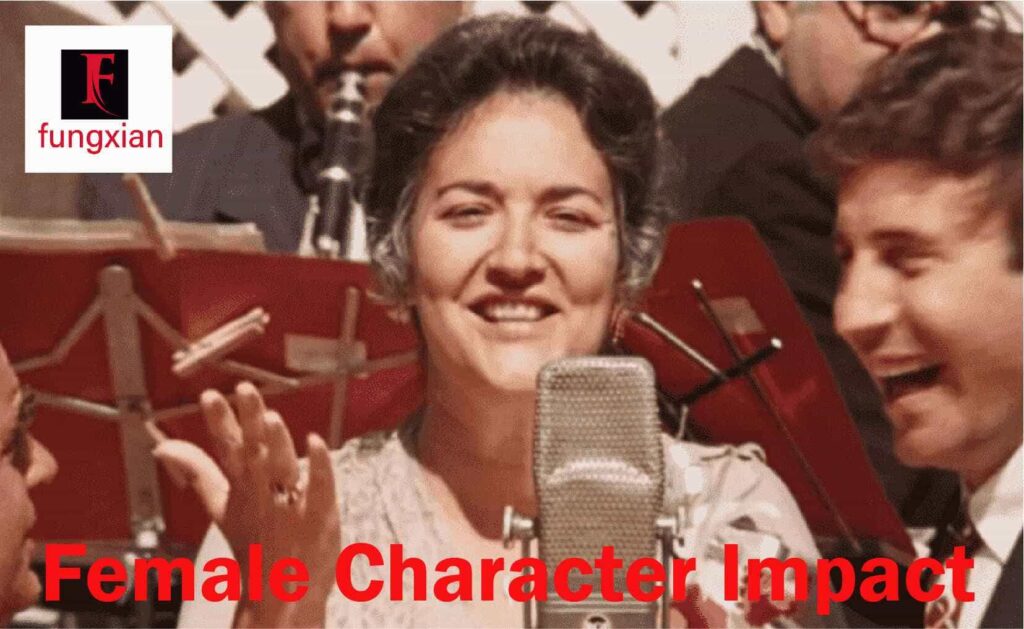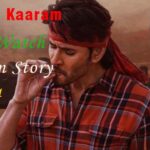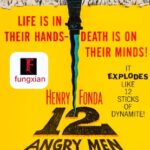“The Godfather Review.” In the illustrious tapestry of cinema, there exists a rare gem that continues to shine brighter with each passing year – “The Godfather.” This 1972 magnum opus, directed by the visionary Francis Ford Coppola, is more than just a film; it’s an enduring testament to the power of storytelling, character development, and cinematic artistry. As we embark on this journey through the corridors of the Corleone family’s empire, we’ll unravel the intricate layers of this cinematic masterpiece, exploring its narrative brilliance, unforgettable characters, and its everlasting impact on the world of cinema. So, fasten your seatbelts, as we dive into the epic world of “The Godfather.
| Main Genre | Crime Drama, Family Drama and Tragedy |
| Release date | March 15, 1972 |
| Duration | 2 Hours And 55 Minutes |
| Original Country | United States |
| Original language | English |
| Hit Song | Speak Softly Love |
| Rating | 9.2/10 on IMDb |
| Earning | $245 million |
| Famous Dialogues | “I’m gonna make him an offer he can’t refuse.” – Vito Corleone (Marlon Brando) |
| Awards | 1) Academy Awards (Oscars) 2) Golden Globe Awards 3) BAFTA Awards |
| Parts | Three • The Godfather (1972) • The Godfather Part II (1974) • The Godfather Part III (1990) |
The Godfather Cast
- Marlon Brando
- Al Pacino
- James Caan
- Robert Duvall
- Diane Keaton
- Talia Shire
- John Cazale
- Sterling Hayden
- Richard S. Castellano
- Richard Conte
- Al Lettieri
- Abe Vigoda
- Gianni Russo
- John Marley
- Alex Rocco
The Godfather Crew
- Francis Ford Coppola
- Albert S. Ruddy
- Gray Frederickson
- Fred Roos
- Mario Puzo
- Gordon Willis
- William Reynolds
- Peter Zinner
- Barry Malkin
- Dean Tavoularis
- Anna Hill Johnstone
- Milena Canonero
- Nino Rota
Table of Contents
The Godfather (1972) – Part I

The Godfather Review: Introduction to the World of Crime
Join us on a journey through ‘The Godfather Review’ as we delve into the intricacies of this cinematic gem. “The Godfather” isn’t just a movie; it’s an immersion into the gritty, morally complex world of organized crime in post-World War II New York. In “The Godfather” movie, the “World of Crime” is depicted as a sprawling and secretive underworld where the Corleone mafia family operates. This criminal world involves illegal activities such as extortion, gambling, drug trafficking, and murder. It’s a realm characterized by codes of honor, loyalty, and ruthless power struggles among different mafia families.
The film explores how the Corleone family navigates this world, making alliances and facing threats while maintaining their own brand of justice. The movie delves into the complex dynamics, moral ambiguity, and consequences of involvement in organized crime, portraying it as a shadowy and morally ambiguous domain.
The Plot and Storyline
The Godfather Review:- The story is set in post-World War II New York and follows the Corleone family, led by Don Vito Corleone, played brilliantly by Marlon Brando. The film explores the intricacies of organized crime and the family’s involvement in it. Don Vito, known as the Godfather, is a complex character who operates by a strict code of ethics within the criminal underworld.
The plot takes a gripping turn when Don Vito’s son, Michael Corleone, portrayed by Al Pacino, becomes embroiled in the family’s affairs, despite his initial reluctance. Michael’s transformation from an outsider to a ruthless mafia leader is at the heart of the film.
What’s the Core of the Story ? – Themes Explored

Power and Corruption:
The Godfather Review:- The film delves into the corrupting influence of power. As the Corleone family consolidates its control over the organized crime world, characters grapple with the moral compromises they must make to maintain their status and influence. The pursuit of power often leads to moral decay and violence.
Family and Loyalty:
“The Godfather Review” provides a detailed analysis of the timeless cinematic masterpiece, delving into its power, family dynamics, and enduring impact. At its core, “The Godfather” is a family drama. It examines the dynamics of the Corleone crime family and the lengths to which its members will go to protect and support one another. The theme of loyalty to the family is juxtaposed with the characters’ involvement in organized crime, creating moral dilemmas and conflicts.
Violence and Revenge:
The Godfather Review:- The Godfather” portrays violence as an integral part of the organized crime world. Revenge is a recurring motif as characters seek retribution for past wrongs. The film explores the cycle of violence and how it perpetuates itself within the criminal underworld.
Justice and Morality:
The Godfather Review:- The film raises questions about justice and morality. Characters often take the law into their own hands, and the boundary between right and wrong becomes blurred. This moral ambiguity forces the audience to grapple with complex ethical dilemmas.
Immigrant Experience
The Godfather Review:- The movie reflects the immigrant experience in America, particularly through the lens of the Italian-American community. The Corleone family’s rise to power is rooted in their immigrant background, highlighting themes of assimilation, identity, and the American Dream.
Isolation and Alienation:
The Godfather Review:- Characters in “The Godfather” often experience isolation and alienation as a result of their involvement in the criminal world. They must distance themselves from mainstream society and often face betrayal from within their own ranks.
Redemption and Transformation:
“In ‘The Godfather Review,’ we dissect the epic tale, exploring its legendary status in the world of cinema.” The film explores the possibility of redemption and transformation. Characters like Michael Corleone undergo significant changes throughout the story, challenging the notion that they are irredeemable
Capitalism and Business:
The Godfather Review:- The Corleone family’s criminal empire is depicted with elements of capitalism and business acumen. The film explores the idea that organized crime operates as a parallel economy, with its own rules and strategies.
Cinematic Techniques
Explore the depths of ‘The Godfather Review,’ where we analyze the film’s themes and its place in cinematic history. Francis Ford Coppola’s direction and the cinematography by Gordon Willis are notable for their use of dark, moody lighting and innovative camera work. The film’s famous wedding scene, where we are introduced to the various characters, is a brilliant example of storytelling through visuals. The use of music, particularly Nino Rota’s haunting score, adds depth and emotion to the film.
key Moments

Opening Scene – The Don’s Request:
“Experience ‘The Godfather Review’ and gain new insights into the timeless storytelling and character development.” The opening scene of the film takes place during the lavish wedding of Don Vito Corleone’s daughter, Connie. This scene introduces the audience to the world of the Corleone family, showcasing their wealth, power, and influence. It’s a masterful display of Vito’s role as a benevolent but ruthless patriarch. Notably, it’s during this scene that Vito receives requests and grants favors, demonstrating his control over the lives of those who seek his help.
The Horse’s Head:
The Godfather Review:- A chilling and unforgettable moment occurs when the severed head of a prized racehorse is placed in the bed of Hollywood producer Jack Woltz. This disturbing act is orchestrated by the Corleones as a gruesome warning to Woltz, who had refused to cast Vito’s godson in a film. The scene serves as a stark example of the family’s capacity for brutal retribution.
Michael’s Transformation:
The Godfather Review:- Michael Corleone’s transformation from a seemingly innocent outsider to a ruthless mafia figure is a central narrative arc. The moment that encapsulates this transformation occurs when he takes matters into his own hands by assassinating drug lord Sollozzo and corrupt police officer Captain McCluskey in a restaurant bathroom. This act of violence marks his initiation into the criminal world, setting the stage for his rise within the family.
Vito’s Shooting:
The Godfather Review:- The attempted assassination of Don Vito Corleone is a pivotal moment in the film. Shot by rival mobsters while purchasing oranges, Vito survives the attack but is left incapacitated. This act of violence sets off a power struggle within the family as his sons, particularly Michael, take charge of protecting their interests.
The Baptism Sequence:
The Godfather Review:- The film’s climactic and morally complex moment occurs during the baptism of Michael’s nephew. While the church ceremony takes place, Michael orchestrates a series of assassinations to eliminate the family’s enemies. This juxtaposition of sacred ritual with violent retribution highlights the moral ambiguity of the characters and their actions. It’s a striking commentary on the duality of their lives.
Fredo’s Betrayal:
The Godfather Review:- Fredo’s betrayal of the family is a heart-wrenching and tragic moment. He aligns himself with Michael’s enemies, including casino owner Hyman Roth, jeopardizing the family’s safety and ultimately leading to dire consequences for both Fredo and the Corleones.
Vito’s Death:
The Godfather Review:- Don Vito Corleone’s death is a poignant and symbolic moment. He dies quietly while playing with his grandson in the garden, underscoring the idea that his era and values are passing away. It’s a powerful reflection on the consequences of a life deeply entrenched in organized crime.
Michael’s Closing Door:
The Godfather Review:- The final shot of the film is a chilling and unforgettable moment. Michael Corleone, now fully transformed into the ruthless Godfather, coldly closes the door on his wife, Kay, after she discovers the truth about his involvement in her brother Fredo’s murder. This moment symbolizes Michael’s isolation, moral descent, and complete embrace of his role as the new family patriarch.
The Meeting of the Five Families:
The Godfather Review:- The meeting of the heads of the five mafia families to discuss the drug trade is a tense and pivotal scene. It highlights the power struggles within the criminal underworld and the Corleones’ efforts to maintain their dominance in this changing landscape. The outcome of this meeting sets the stage for further conflicts in the story.
Tom Hagen’s Loyalty:
Throughout the film, Tom Hagen’s unwavering loyalty to the Corleone family is evident. He calmly and strategically handles various crises, such as Vito’s shooting and Michael’s exile, ensuring the family’s survival. His loyalty and competence make him a critical figure in the family’s operations
The Godfather (1974) – Part II
Expanding the Narrative
It expands on the themes and characters introduced in the first film while introducing a dual narrative structure that deepens the storytelling.
Parallel Narratives
Young Vito’s Rise (1917-1920s): One narrative thread follows a young Vito Corleone, portrayed by Robert De Niro. This compelling subplot takes us back to the early 20th century and chronicles Vito’s journey from a poor immigrant to a cunning and influential figure within the Italian-American community. It’s a story of vengeance, resourcefulness, and survival.
Michael’s Reign (1950s): The other narrative continues the story of Michael Corleone as he consolidates his power in the 1950s. Michael’s evolution into a ruthless mafia leader is further explored as he navigates a world of betrayal, power plays, and personal sacrifice. His relationships with family members and associates become increasingly strained as he seeks to expand the family’s empire.
Themes Explored

Legacy and Change:
‘The Godfather Review’ immerses you in a world of crime, family, and unforgettable performances. “The Godfather Part II” explores the idea of legacy, as Michael grapples with the burden of maintaining the family’s criminal empire while adapting to changing times.
Parallelism:
The juxtaposition of Vito and Michael’s stories underscores the contrast between the old ways of the mafia and the ruthless modern approach. This parallelism adds depth to the exploration of power and morality.
Family and Loyalty:
Family loyalty is another central theme in “The Godfather – Part II.” The Corleone family’s unwavering commitment to one another, even in the face of extreme adversity, underscores the importance of familial bonds. Vito Corleone’s backstory, showcasing his dedication to protecting and providing for his family, contrasts with Michael’s more ruthless approach. This theme explores the complexities of familial relationships within the context of organized crime and the moral dilemmas they often entail.
The Corruption of Power:
At the heart of the film lies the theme of power and its corrupting influence. Michael Corleone’s journey from a reluctant heir to a ruthless mafia boss is a stark illustration of this theme. As he ascends to the position of Don, we witness the moral compromises and ethical decay that come with the pursuit and consolidation of power. This theme serves as a cautionary tale, highlighting how even the most well-intentioned individuals can succumb to the corrupting allure of authority.
The Cycle of Violence:
“The Godfather – Part II” doesn’t shy away from depicting the brutal and cyclical nature of violence in the world of organized crime. As Michael consolidates his power and seeks vengeance against his enemies, the film portrays a never-ending cycle of bloodshed and retribution. This theme underscores the inescapable consequences of a life steeped in criminal activities.
key Moments

Michael’s Ruthless Ascension:
One of the defining moments in the film is when Michael Corleone coldly engineers a series of assassinations to eliminate his rivals within the family, securing his position as the new Don. This marks the point of no return for Michael as he embraces the ruthless nature of his role.
Young Vito’s Transformation:
The flashback sequences depicting the young Vito Corleone’s transformation from a struggling immigrant to a burgeoning Mafia leader are crucial to the film. These moments humanize Vito’s character and provide insight into the origins of the Corleone family’s criminal empire.
The Senator’s Assassination:
A pivotal moment in the film is the assassination of Senator Pat Geary, orchestrated by Michael. This act underscores the extent to which Michael is willing to go to protect the family’s interests and further solidify his power.
Vito’s Revenge in Sicily:
In a powerful and symbolic scene, young Vito returns to his hometown in Sicily to seek revenge on Don Ciccio, the man who killed his family. This act not only solidifies Vito’s status but also marks a turning point in his character.
Kay’s Revelation:
When Kay, Michael’s wife, discovers the truth about Michael’s involvement in her brother Fredo’s death, it shatters their marriage. This moment highlights the personal cost of Michael’s criminal pursuits.
The Godfather (1990) – Part III
Plot Overview:
“The Godfather Part III” takes place in 1979-1980, decades after the events of the previous films. Michael Corleone (played by Al Pacino) is now an older and wiser man. He has sought to transition the Corleone family from a criminal empire into a legitimate conglomerate. To achieve this, he enters into a business deal with the Vatican, hoping to secure a controlling stake in a major European corporation. However, as the narrative unfolds, it becomes evident that the sins of the past continue to cast a long shadow over Michael’s life and the lives of those around him.
The film also introduces us to Vincent Mancini (played by Andy Garcia), the illegitimate son of Sonny Corleone, who emerges as a central character and becomes involved in the family’s affairs.
Themes Explored

Redemption and Atonement:
One of the central themes of “The Godfather Part III” is Michael Corleone’s quest for redemption and atonement. He is haunted by the violent and morally questionable actions of his past, particularly his role in the deaths of his brother Fredo and his first wife, Apollonia. Michael seeks absolution, both from God and himself, by attempting to legitimize his family’s fortune and distance himself from the criminal world.
Legacy and Family:
The film explores the theme of legacy, as Michael tries to ensure a secure and legitimate future for his children. However, this aspiration is continually undermined by the ghosts of his past and the complexity of his family’s dynamics. The tension between his desire for a clean slate and the inescapable weight of his family’s history forms a central conflict in the story.
Corruption and Betrayal:
As with the earlier films, “The Godfather Part III” portrays the pervasive nature of corruption and betrayal, both within and outside the family. Michael faces threats from various quarters, including powerful figures in the Vatican and within his own family. The film underscores the idea that power and wealth often come at a steep moral cost.
key Moments
Michael’s Confession
In one of the most pivotal scenes of the movie, Michael Corleone confesses his sins to Cardinal Lamberto. This is a moment of introspection and spiritual reckoning for Michael, as he seeks redemption for his past crimes and involvement in the mafia.
The Opera House Massacre
One of the most memorable and intense scenes in the film is the assassination attempt on Michael Corleone during a performance at the opera house. This shocking and violent scene marks a turning point in the story and sets off a series of events that shape the rest of the film.
The Death of Vincent Mancini
Vincent Mancini, played by Andy Garcia, is a central character in “The Godfather Part III.” His fate is sealed in a dramatic and tragic scene that has a profound impact on the Corleone family.
The Immolation of Mary Corleone
The shocking and heart-wrenching scene involving the death of Mary Corleone is a key moment in the film. It’s a culmination of the family’s struggles and serves as a tragic climax to the story.
The Final Meeting
The final scene of the movie brings Michael Corleone face to face with the consequences of his choices and actions. It’s a powerful and contemplative moment that closes the chapter on the Corleone family saga.
Impact and Legacy of The Godfather

Female Character Impact
In “The Godfather” movie, female characters like Kay Adams and Mama Corleone bring moral strength and wisdom, while others like Connie Corleone and Apollonia Vitelli-Corleone serve as catalysts for conflicts and plot developments, breaking gender stereotypes in the process.
Redefining Gangster Films
“The Godfather” trilogy elevated gangster films to a new level of sophistication. Before its release, gangster movies often glorified crime without delving into the psychological and moral complexities of the characters. However, “The Godfather” focused on the characters’ internal struggles, personal sacrifices, and the consequences of their actions. This shift in narrative approach set a precedent for a more nuanced portrayal of organized crime in cinema.
Iconic Characters
The trilogy introduced audiences to unforgettable characters, brought to life by exceptional performances. Marlon Brando’s portrayal of Don Vito Corleone, with his raspy voice and signature mannerisms, set a new standard for character acting. Al Pacino’s transformation from an idealistic war hero into a ruthless mafia boss as Michael Corleone is a masterclass in character development. Robert Duvall’s portrayal of Tom Hagen, the family’s consigliere, added depth and nuance to the ensemble cast. These performances are not only iconic but have also served as references for aspiring actors.
Memorable Dialogues
The “Godfather” trilogy is renowned for its sharp and memorable dialogues. Lines like “I’m gonna make him an offer he can’t refuse” and “It’s not personal, Sonny. It’s strictly business” have become ingrained in popular culture. These dialogues are not only brilliantly written but are delivered with impeccable timing and gravitas by the cast. They have transcended the confines of the film and are often quoted and parodied in various media.
Cinematic Excellence
The trilogy’s cinematography, direction, and musical score by Nino Rota are exemplary. Cinematographer Gordon Willis employed a unique and groundbreaking visual style characterized by the use of dark, shadowy lighting, which added to the film’s atmosphere and tone. Director Francis Ford Coppola’s meticulous attention to detail and storytelling prowess ensured that every frame of the trilogy was a work of art. Nino Rota’s haunting and evocative score added an emotional depth to the narrative. These elements combined to set new standards of excellence in filmmaking.
Family and Morality
At its heart, “The Godfather” trilogy is a family saga that explores complex themes of loyalty, betrayal, and the consequences of power. The Corleone family’s dynamics and their moral dilemmas resonate with audiences on a profound level. The central question of how far one is willing to go to protect their loved ones is a universal theme that continues to captivate viewers.
Influence on Filmmakers
“The Godfather” trilogy has had a profound influence on subsequent generations of filmmakers. Directors like Quentin Tarantino and Martin Scorsese have openly acknowledged how the trilogy has shaped their approach to storytelling, character development, and cinematography. Its impact can be seen in the themes and techniques of countless films that followed.
Cultural Impact
In ‘The Godfather Review,’ we navigate the labyrinth of power and loyalty, showcasing the film’s timeless relevance in today’s storytelling. “The Godfather” has seeped into the fabric of popular culture. It has been referenced, parodied, and homaged in numerous films, TV shows, and even advertisements. From “The Simpsons” to “The Sopranos,” its influence is pervasive, and its characters and lines have become cultural touchstones.
The Trilogy’s Endurance
As we delve deeper into ‘The Godfather Review,’ the man who left an indelible mark on cinematic history. Decades after its initial release, “The Godfather” trilogy remains a beloved and enduring classic. It continues to be celebrated through re-releases, special screenings, and retrospectives. New generations of viewers discover and appreciate its timeless storytelling, making it a cinematic treasure that stands the test of time.
In ‘The Godfather Review,’ we unravel the threads of loyalty, betrayal, and power that weave this unforgettable cinematic tapestry. “The Godfather” is an iconic crime drama film trilogy directed by Francis Ford Coppola. Centered around the Corleone mafia family, it explores themes of power, loyalty, and morality. Marlon Brando’s Don Vito Corleone and Al Pacino’s Michael Corleone are standout characters in a story filled with unforgettable dialogues and masterful cinematography. The trilogy’s enduring legacy has left an indelible mark on cinema and popular culture, redefining the gangster genre and earning its place as a timeless classic.
‘The Godfather Review’ becomes a window into the intricate web of relationships and power struggles.”
ALSO READ:- Lady Gaga Joker Movie
ALSO READ:- Emergency Movie
ALSO READ:- The Killer Movie
ALSO READ:- Titanic Movie
ALSO READ:- Dangal Movie
ALSO READ:- Avatar 2 Movie
ALSO READ:- Pk Movie
ALSO READ:- Filmyzilla
ALSO READ:- Tiger 3 Movie
ALSO READ:- Mission Raniganj Movie
ALSO READ:- Jane Breaking Bad
ALSO READ:- Inception Movie










